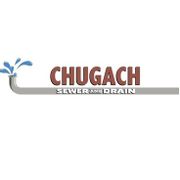
When you need to drill into the ground to assess the potential for underground utilities, install a line, a sign or a pole you may use hydro excavation. This process allows for pinpointed drilling that doesn’t create a large excavation site. How does this process work? Below, the experienced team at Chugach Sewer and Drain in Anchorage, AK, explains how they perform hydro excavation to help you decide if it’s the right fit for your project.
A Beginner's Guide to Hydro Excavation
To start hydro excavation, a large truck with a water tank will park at the construction site. Contractors will focus a crane boom attached to the truck directly over the area to be dug out. A hose threaded through the crane and attached to the tank will move the high-pressure water to dig the area. The size of the hose is often about five inches wide, but this can change based on the capacity of the truck. You may need a bigger hose for a larger job.
 Once the rig is in place, the water storage tank forces water through the hose and into the ground. The water will burst through mud, soil, and clay. An air conveyance then moves the surface debris to a special tank, leaving the hole empty and mitigating the mess in the area to allow for easy utility inspection and installation of poles, signs or lines.
Once the rig is in place, the water storage tank forces water through the hose and into the ground. The water will burst through mud, soil, and clay. An air conveyance then moves the surface debris to a special tank, leaving the hole empty and mitigating the mess in the area to allow for easy utility inspection and installation of poles, signs or lines.
If you want to talk to hydro excavation experts about how the method can help with your project, contact the team at Chugach Sewer and Drain. Their residential plumbing and drain cleaning services also include fixing bathroom fixtures, inspecting drain pipes, thawing sewer lines, and hydro jet cleaning. Call the certified and fully licensed technicians at (907) 929-5072, and visit the website for information on how hydro excavation can help you complete your digging needs.
About the Business
(7 reviews)
Have a question? Ask the experts!
Send your question

